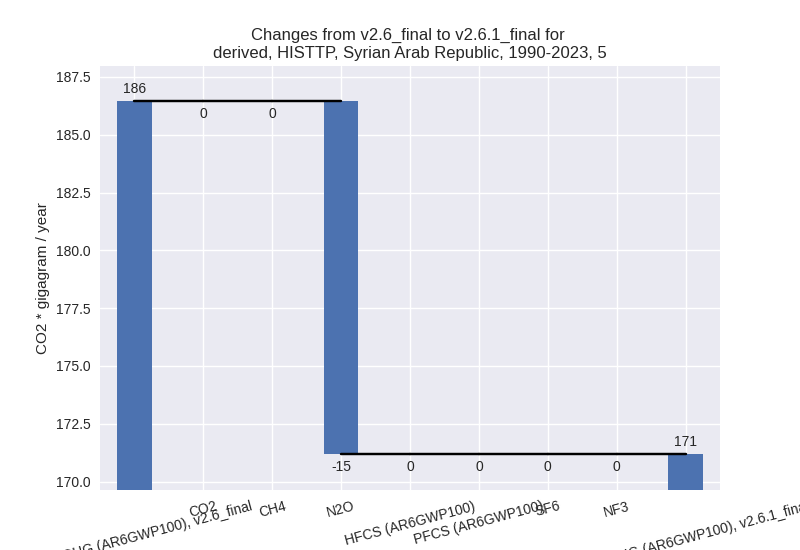Changes in PRIMAP-hist v2.6.1_final compared to v2.6_final for Syrian Arab Republic
2025-03-19
Johannes Gütschow
Change analysis for Syrian Arab Republic for PRIMAP-hist v2.6.1_final compared to v2.6_final
Overview over emissions by sector and gas
The following figures show the aggregate national total emissions excluding LULUCF AR6GWP100 for the country reported priority scenario. The dotted linesshow the v2.6_final data.
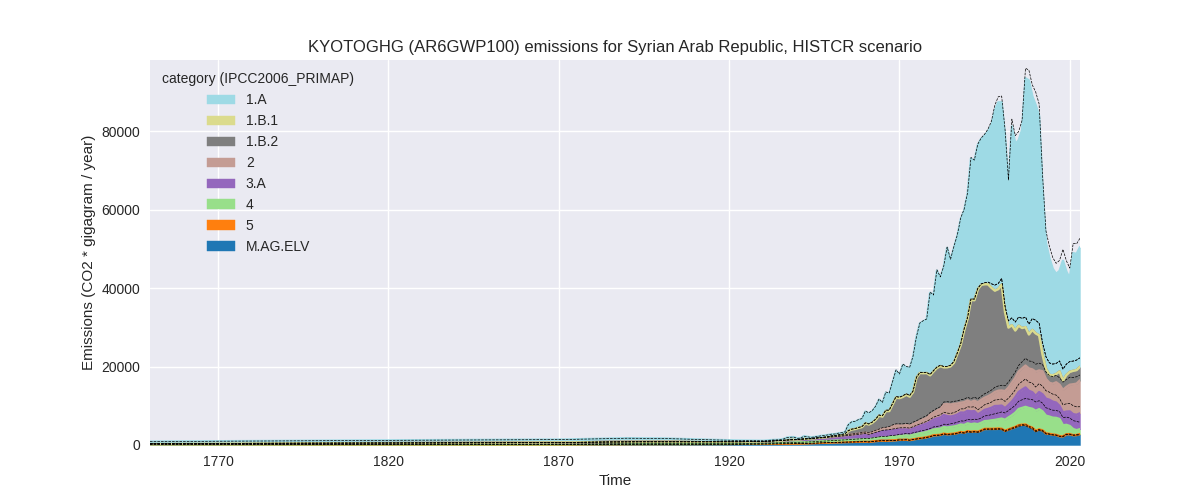
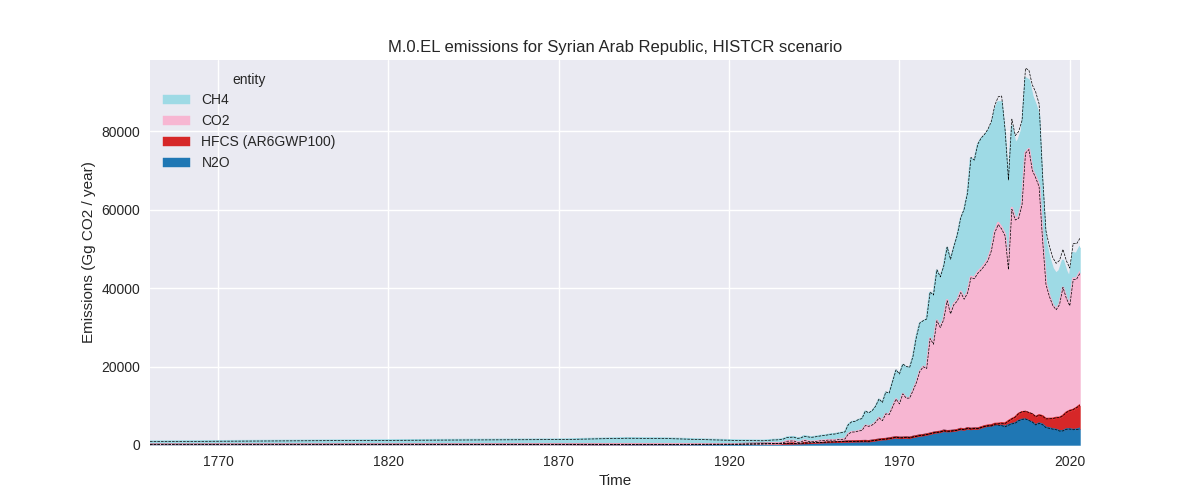
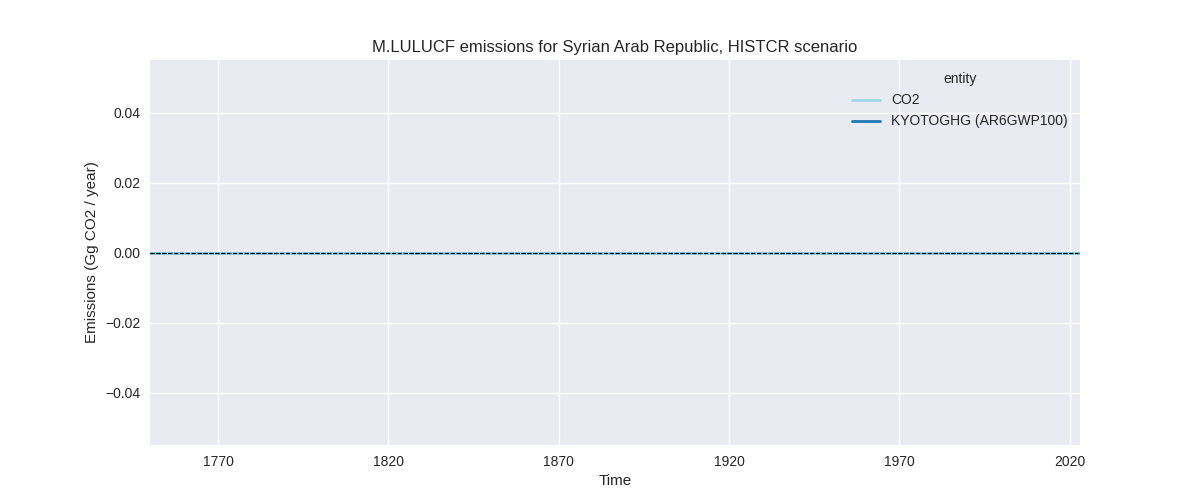
The following figures show the aggregate national total emissions excluding LULUCF AR6GWP100 for the third party priority scenario. The dotted linesshow the v2.6_final data.
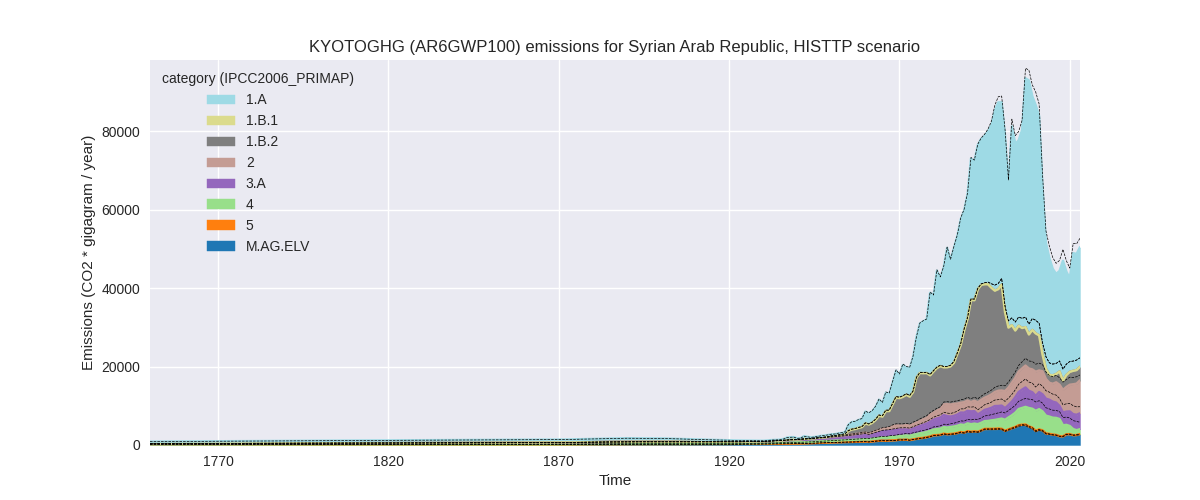
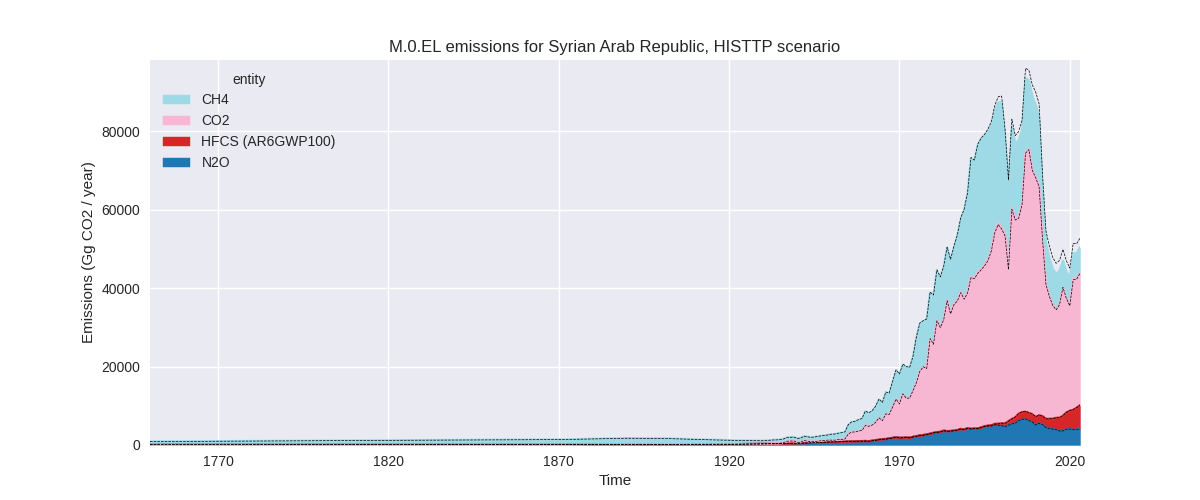
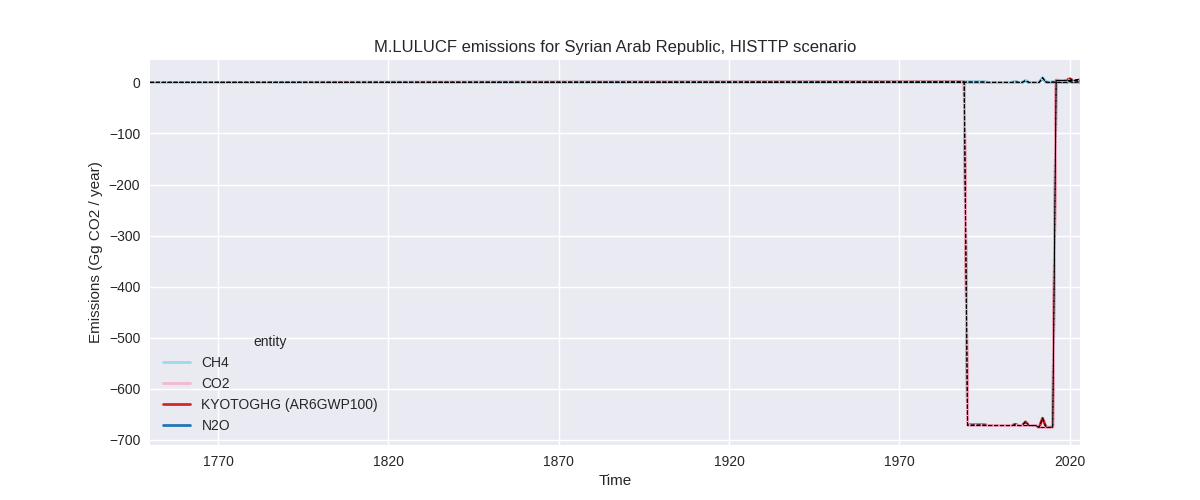
Overview over changes
In the country reported priority scenario we have the following changes for aggregate Kyoto GHG and national total emissions excluding LULUCF (M.0.EL):
- Emissions in 2023 have changed by -4.3%% (-2292.28 Gg CO2 / year)
- Emissions in 1990-2023 have changed by -2.8%% (-1985.69 Gg CO2 / year)
In the third party priority scenario we have the following changes for aggregate Kyoto GHG and national total emissions excluding LULUCF (M.0.EL):
- Emissions in 2023 have changed by -4.3%% (-2292.28 Gg CO2 / year)
- Emissions in 1990-2023 have changed by -2.8%% (-1985.69 Gg CO2 / year)
Most important changes per scenario and time frame
In the country reported priority scenario the following sector-gas combinations have the highest absolute impact on national total KyotoGHG (AR6GWP100) emissions in 2023 (top 5):
- 1: 4, CH4 with -1730.57 Gg CO2 / year (-63.0%)
- 2: 1.B.2, CH4 with -922.55 Gg CO2 / year (-43.2%)
- 3: 2, CO2 with 307.72 Gg CO2 / year (29.5%)
- 4: M.AG.ELV, N2O with 114.48 Gg CO2 / year (4.6%)
- 5: M.AG.ELV, CO2 with -80.82 Gg CO2 / year (-66.7%)
In the country reported priority scenario the following sector-gas combinations have the highest absolute impact on national total KyotoGHG (AR6GWP100) emissions in 1990-2023 (top 5):
- 1: 4, CH4 with -1746.00 Gg CO2 / year (-37.2%)
- 2: 1.B.2, CH4 with -472.85 Gg CO2 / year (-3.6%)
- 3: 2, CO2 with 279.95 Gg CO2 / year (16.0%)
- 4: 4, N2O with -40.65 Gg CO2 / year (-17.4%)
- 5: 5, N2O with -15.26 Gg CO2 / year (-8.2%)
In the third party priority scenario the following sector-gas combinations have the highest absolute impact on national total KyotoGHG (AR6GWP100) emissions in 2023 (top 5):
- 1: 4, CH4 with -1730.57 Gg CO2 / year (-63.0%)
- 2: 1.B.2, CH4 with -922.55 Gg CO2 / year (-43.2%)
- 3: 2, CO2 with 307.72 Gg CO2 / year (29.5%)
- 4: M.AG.ELV, N2O with 114.48 Gg CO2 / year (4.6%)
- 5: M.AG.ELV, CO2 with -80.82 Gg CO2 / year (-66.7%)
In the third party priority scenario the following sector-gas combinations have the highest absolute impact on national total KyotoGHG (AR6GWP100) emissions in 1990-2023 (top 5):
- 1: 4, CH4 with -1746.00 Gg CO2 / year (-37.2%)
- 2: 1.B.2, CH4 with -472.85 Gg CO2 / year (-3.6%)
- 3: 2, CO2 with 279.95 Gg CO2 / year (16.0%)
- 4: 4, N2O with -40.65 Gg CO2 / year (-17.4%)
- 5: 5, N2O with -15.26 Gg CO2 / year (-8.2%)
Notes on data changes
Here we list notes explaining important emissions changes for the country.
- There is no usable country reported data for Syria, thus the CR and TP time-series are identical.
- Changes in the time-series come from updated EDGAR and FAO data. FAO has adjusted data for the latest years while EDGAR has updated full time-series with the main change coming from the waste sector
Changes by sector and gas
For each scenario and time frame the changes are displayed for all individual sectors and all individual gases. In the sector plot we use aggregate Kyoto GHGs in AR6GWP100. In the gas plot we usenational total emissions without LULUCF.
country reported scenario
2023
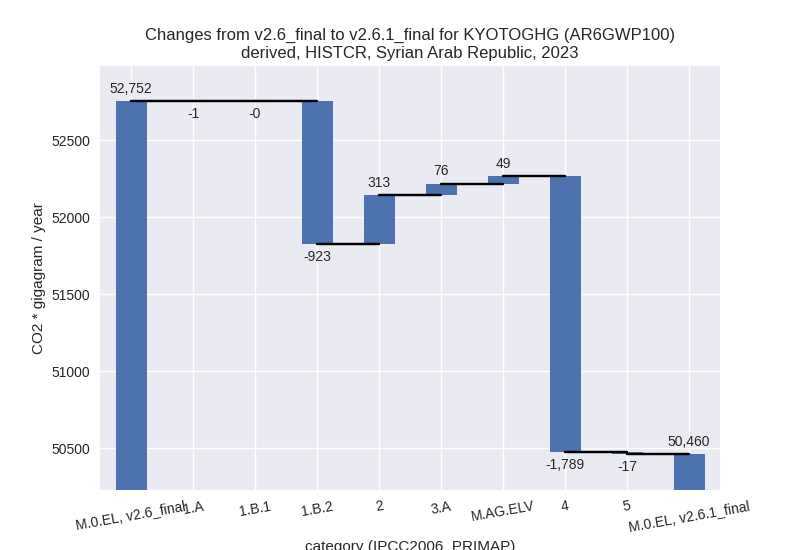
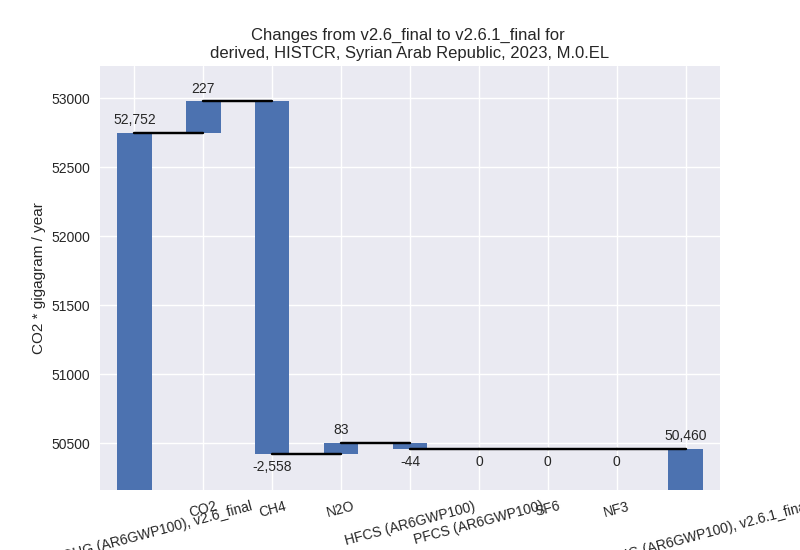
1990-2023
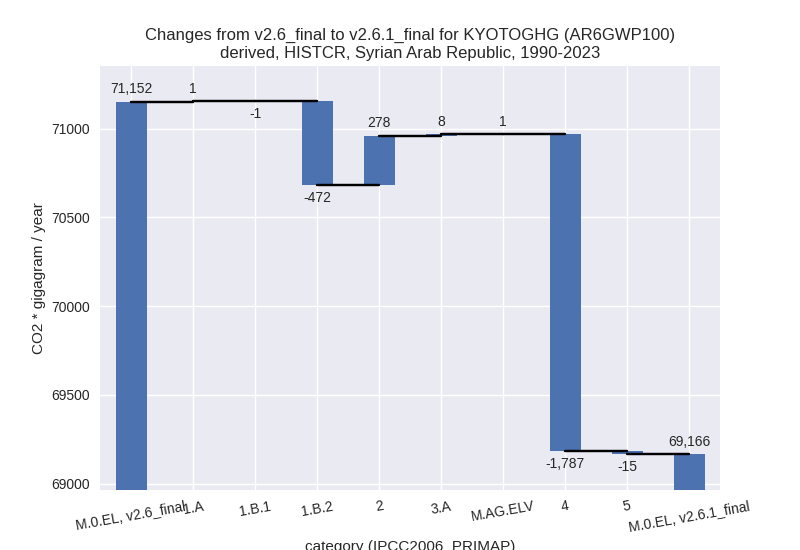
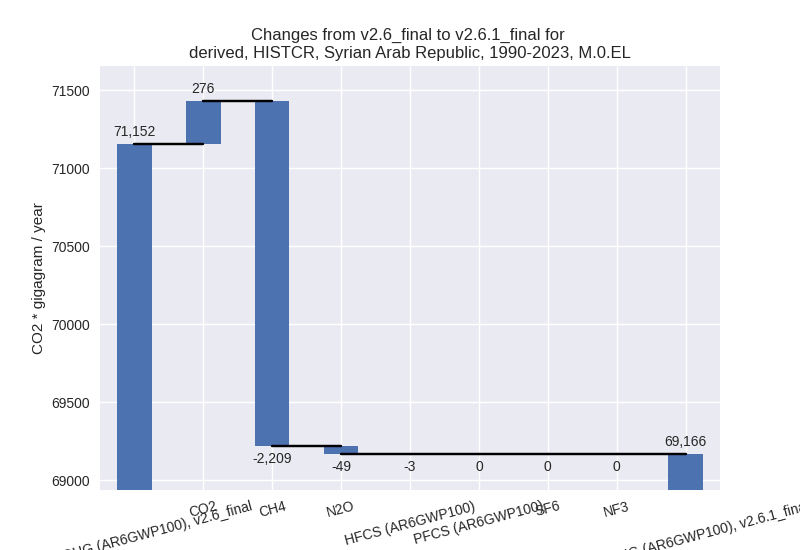
third party scenario
2023
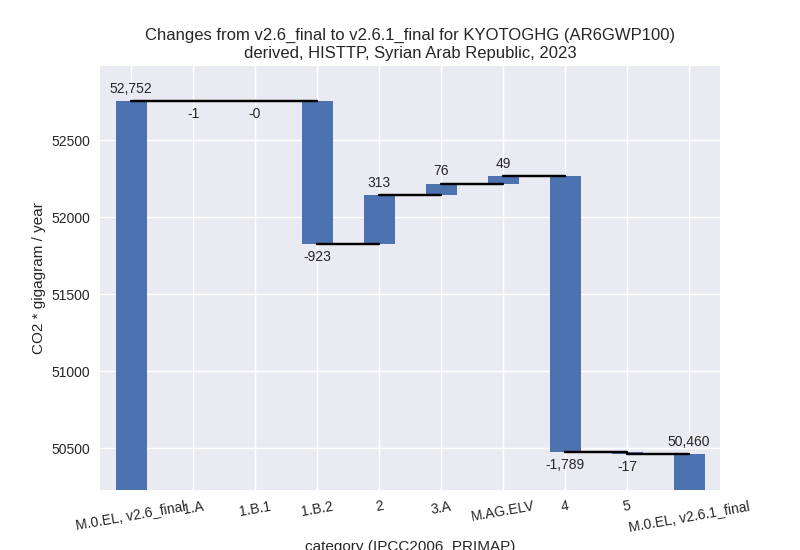
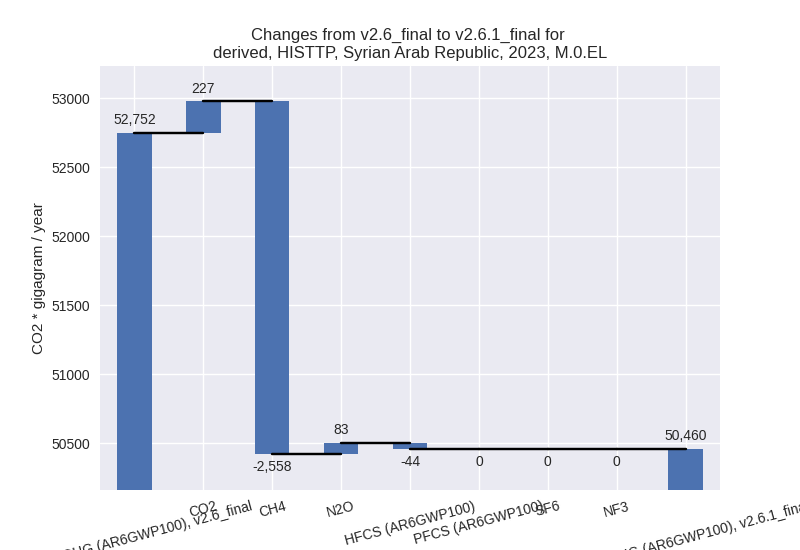
1990-2023
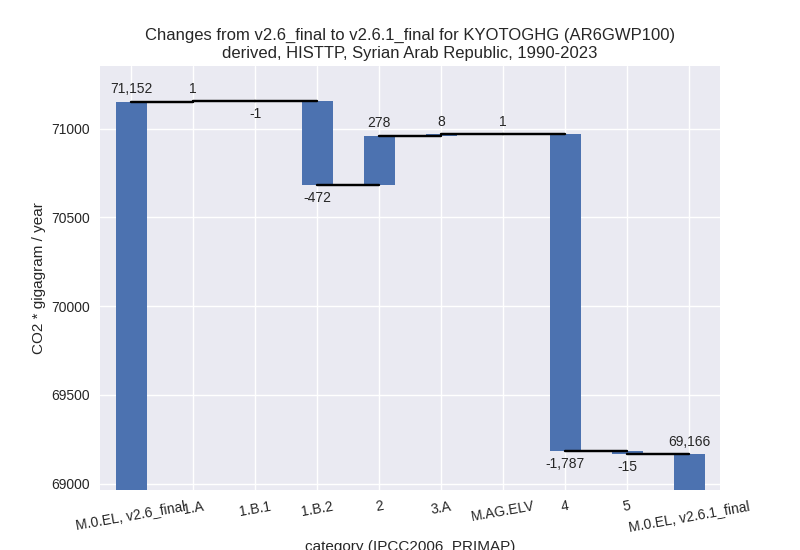
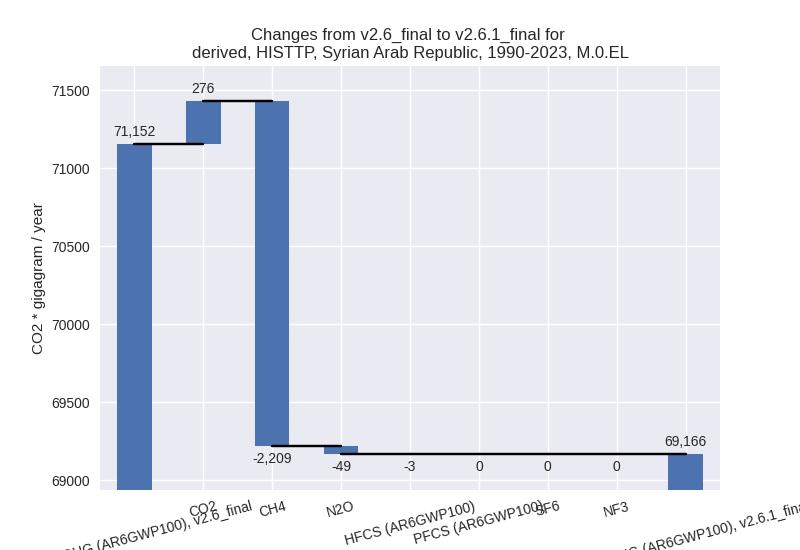
Detailed changes for the scenarios:
country reported scenario (HISTCR):
Most important changes per time frame
For 2023 the following sector-gas combinations have the highest absolute impact on national total KyotoGHG (AR6GWP100) emissions in 2023 (top 5):
- 1: 4, CH4 with -1730.57 Gg CO2 / year (-63.0%)
- 2: 1.B.2, CH4 with -922.55 Gg CO2 / year (-43.2%)
- 3: 2, CO2 with 307.72 Gg CO2 / year (29.5%)
- 4: M.AG.ELV, N2O with 114.48 Gg CO2 / year (4.6%)
- 5: M.AG.ELV, CO2 with -80.82 Gg CO2 / year (-66.7%)
For 1990-2023 the following sector-gas combinations have the highest absolute impact on national total KyotoGHG (AR6GWP100) emissions in 1990-2023 (top 5):
- 1: 4, CH4 with -1746.00 Gg CO2 / year (-37.2%)
- 2: 1.B.2, CH4 with -472.85 Gg CO2 / year (-3.6%)
- 3: 2, CO2 with 279.95 Gg CO2 / year (16.0%)
- 4: 4, N2O with -40.65 Gg CO2 / year (-17.4%)
- 5: 5, N2O with -15.26 Gg CO2 / year (-8.2%)
Changes in the main sectors for aggregate KyotoGHG (AR6GWP100) are
- 1: Total sectoral emissions in 2022 are 33087.50 Gg
CO2 / year which is 67.9% of M.0.EL emissions. 2023 Emissions have
changed by -2.7% (-924.47 Gg CO2 /
year). 1990-2023 Emissions have changed by -0.9% (-471.34 Gg CO2 / year). For 2023
the changes per gas
are:
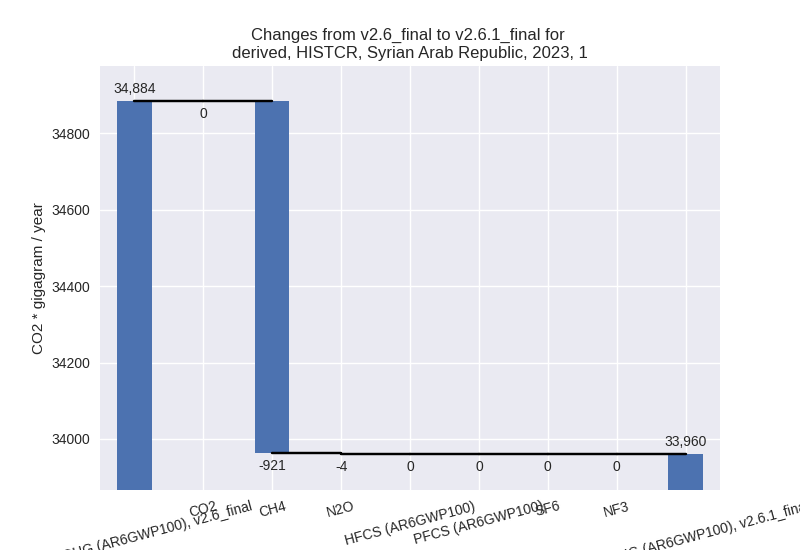
The changes come from the following subsectors:- 1.A: Total sectoral emissions in 2022 are 29626.37 Gg CO2 / year which is 89.5% of category 1 emissions. 2023 Emissions have changed by -0.0% (-1.19 Gg CO2 / year). 1990-2023 Emissions have changed by 0.0% (1.47 Gg CO2 / year).
- 1.B.1: Total sectoral emissions in 2022 are 7.29 Gg
CO2 / year which is 0.0% of category 1 emissions. 2023 Emissions have
changed by -0.0% (-0.00 Gg CO2 /
year). 1990-2023 Emissions have changed by -7.8% (-0.55 Gg CO2 / year). For 1990-2023
the changes per gas
are:
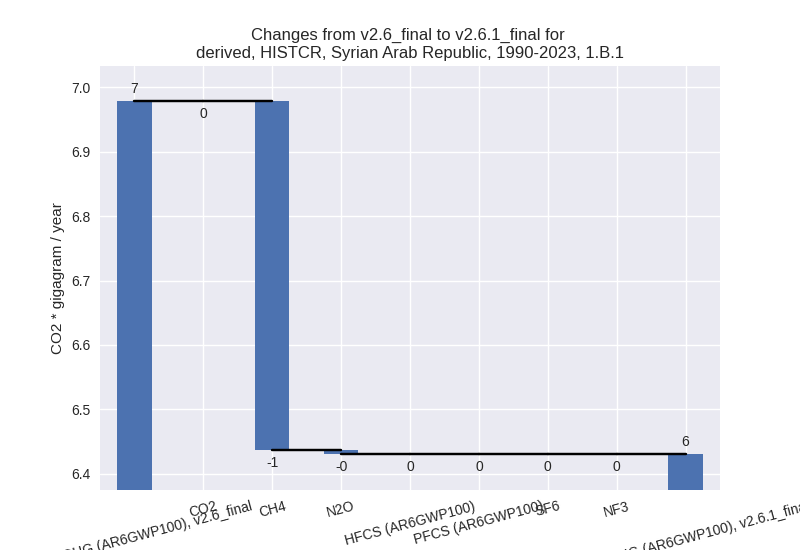
There is no subsector information available in PRIMAP-hist. - 1.B.2: Total sectoral emissions in 2022 are 3453.84
Gg CO2 / year which is 10.4% of category 1 emissions. 2023 Emissions
have changed by -21.1% (-923.28 Gg
CO2 / year). 1990-2023 Emissions have changed by -3.4% (-472.27 Gg CO2 / year). For 2023
the changes per gas
are:
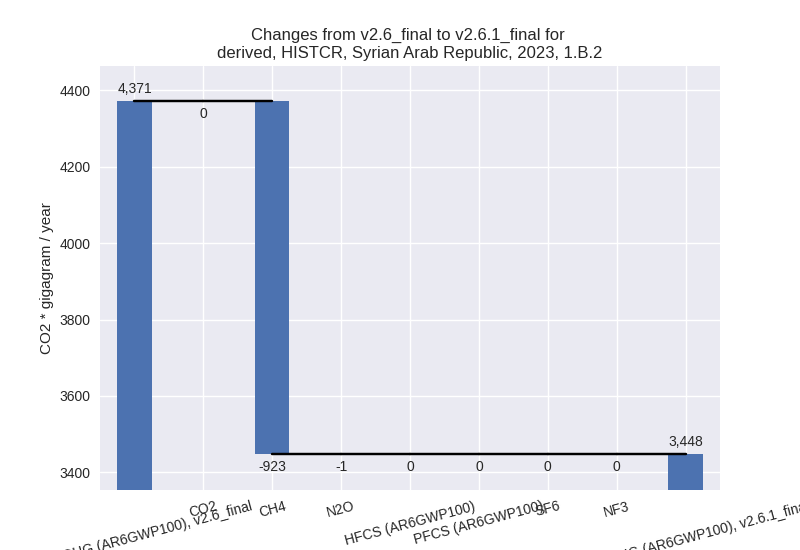
For 1990-2023 the changes per gas are: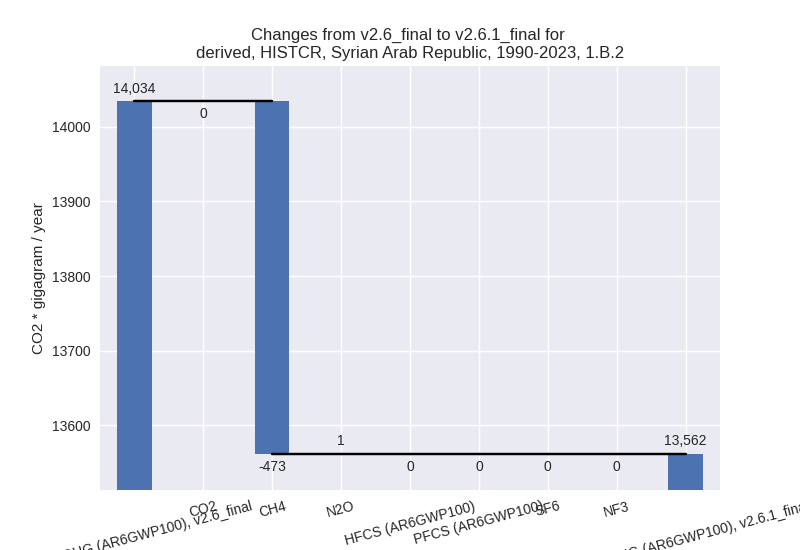
There is no subsector information available in PRIMAP-hist.
- 2: Total sectoral emissions in 2022 are 7945.63 Gg
CO2 / year which is 16.3% of M.0.EL emissions. 2023 Emissions have
changed by 3.9% (313.04 Gg CO2 /
year). 1990-2023 Emissions have changed by 6.0% (278.27 Gg CO2 / year). For 2023 the
changes per gas
are:
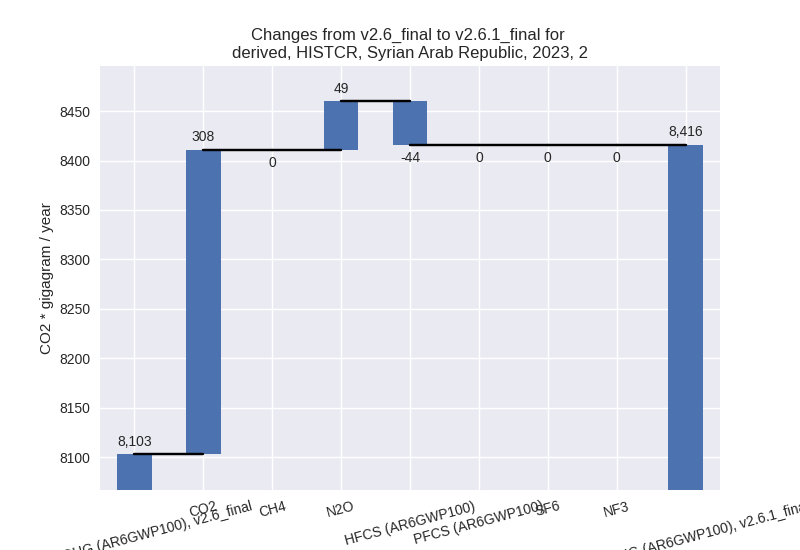
For 1990-2023 the changes per gas are: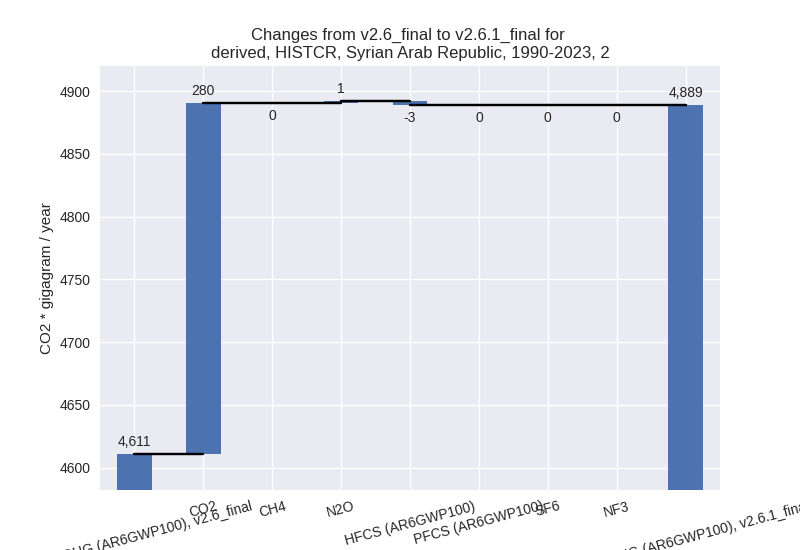
- M.AG: Total sectoral emissions in 2022 are 6388.74 Gg CO2 / year which is 13.1% of M.0.EL emissions. 2023 Emissions have changed by 1.9% (125.27 Gg CO2 / year). 1990-2023 Emissions have changed by 0.1% (9.30 Gg CO2 / year).
- 4: Total sectoral emissions in 2022 are 1225.88 Gg
CO2 / year which is 2.5% of M.0.EL emissions. 2023 Emissions have
changed by -59.1% (-1789.45 Gg CO2 /
year). 1990-2023 Emissions have changed by -36.3% (-1786.65 Gg CO2 / year). For 2023
the changes per gas
are:
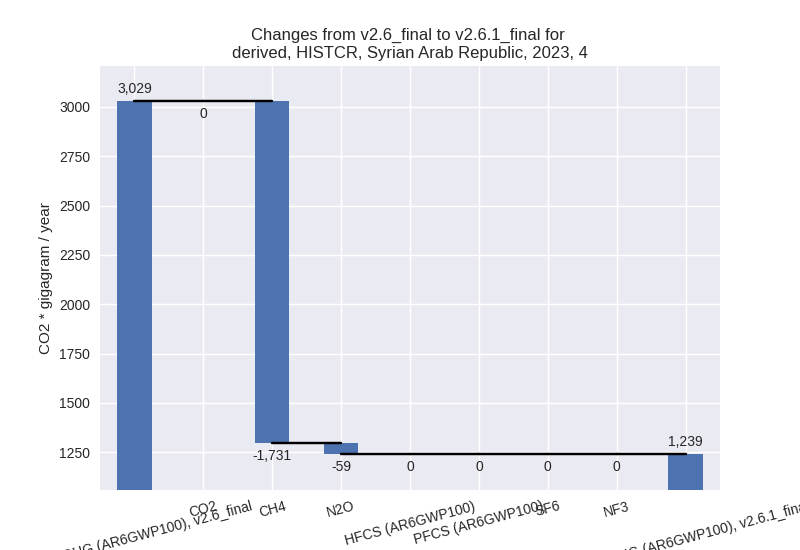
For 1990-2023 the changes per gas are: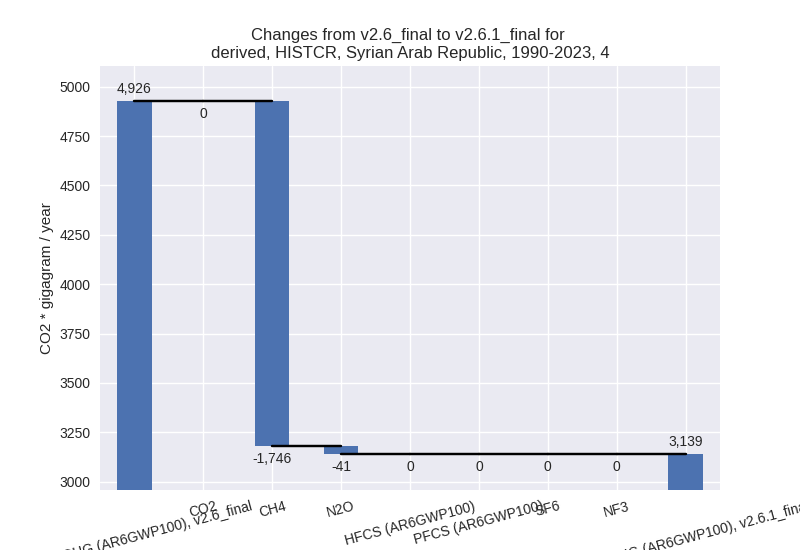
- 5: Total sectoral emissions in 2022 are 91.30 Gg
CO2 / year which is 0.2% of M.0.EL emissions. 2023 Emissions have
changed by -15.2% (-16.68 Gg CO2 /
year). 1990-2023 Emissions have changed by -8.2% (-15.26 Gg CO2 / year). For 2023 the
changes per gas
are:
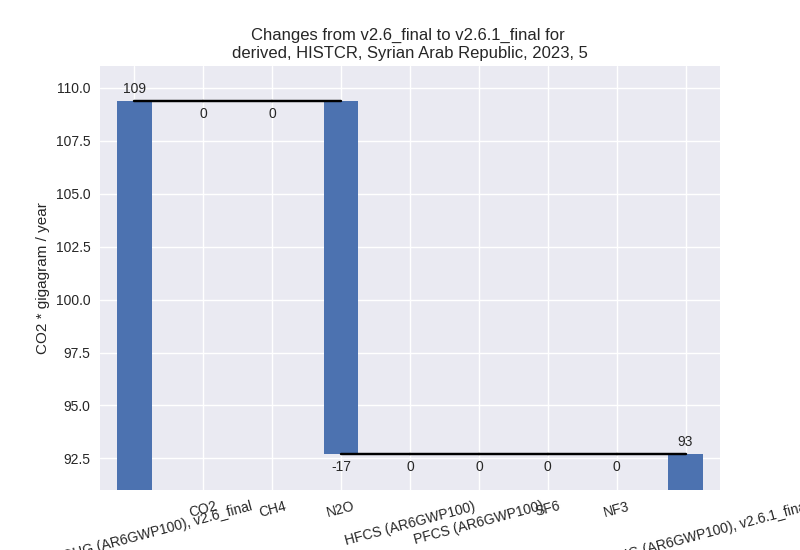
For 1990-2023 the changes per gas are: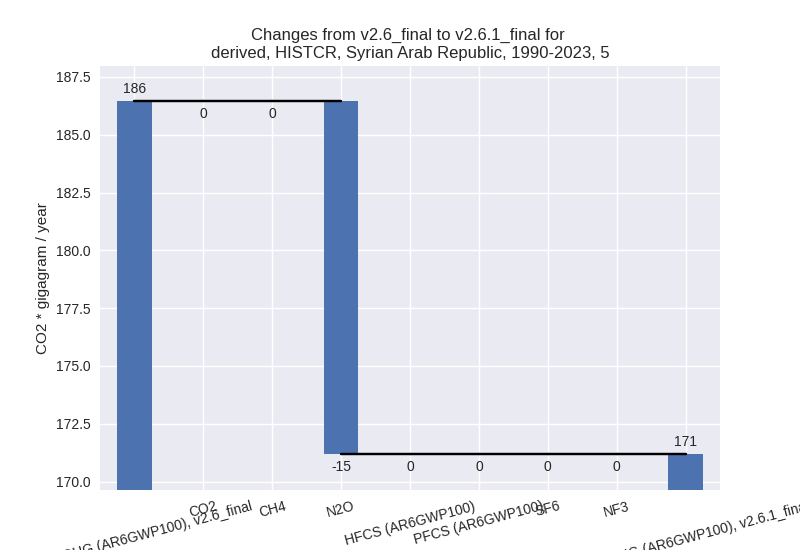
third party scenario (HISTTP):
Most important changes per time frame
For 2023 the following sector-gas combinations have the highest absolute impact on national total KyotoGHG (AR6GWP100) emissions in 2023 (top 5):
- 1: 4, CH4 with -1730.57 Gg CO2 / year (-63.0%)
- 2: 1.B.2, CH4 with -922.55 Gg CO2 / year (-43.2%)
- 3: 2, CO2 with 307.72 Gg CO2 / year (29.5%)
- 4: M.AG.ELV, N2O with 114.48 Gg CO2 / year (4.6%)
- 5: M.AG.ELV, CO2 with -80.82 Gg CO2 / year (-66.7%)
For 1990-2023 the following sector-gas combinations have the highest absolute impact on national total KyotoGHG (AR6GWP100) emissions in 1990-2023 (top 5):
- 1: 4, CH4 with -1746.00 Gg CO2 / year (-37.2%)
- 2: 1.B.2, CH4 with -472.85 Gg CO2 / year (-3.6%)
- 3: 2, CO2 with 279.95 Gg CO2 / year (16.0%)
- 4: 4, N2O with -40.65 Gg CO2 / year (-17.4%)
- 5: 5, N2O with -15.26 Gg CO2 / year (-8.2%)
Changes in the main sectors for aggregate KyotoGHG (AR6GWP100) are
- 1: Total sectoral emissions in 2022 are 33087.50 Gg
CO2 / year which is 67.9% of M.0.EL emissions. 2023 Emissions have
changed by -2.7% (-924.47 Gg CO2 /
year). 1990-2023 Emissions have changed by -0.9% (-471.34 Gg CO2 / year). For 2023
the changes per gas
are:
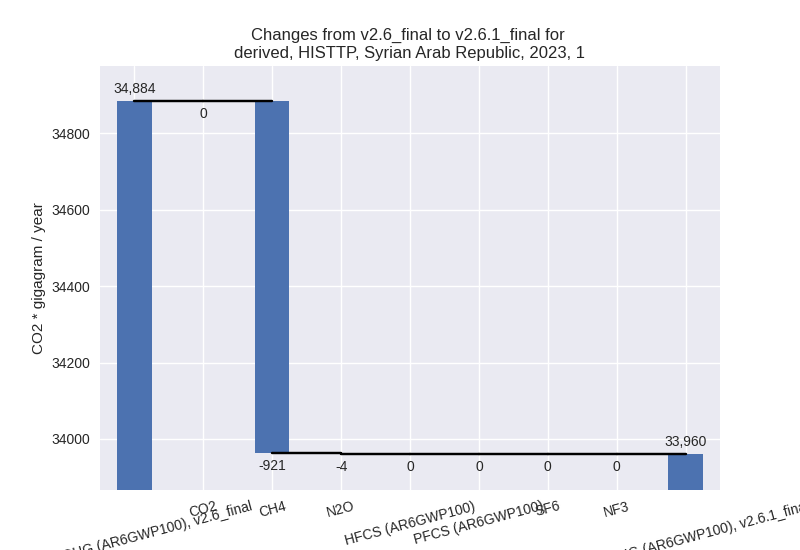
The changes come from the following subsectors:- 1.A: Total sectoral emissions in 2022 are 29626.37 Gg CO2 / year which is 89.5% of category 1 emissions. 2023 Emissions have changed by -0.0% (-1.19 Gg CO2 / year). 1990-2023 Emissions have changed by 0.0% (1.47 Gg CO2 / year).
- 1.B.1: Total sectoral emissions in 2022 are 7.29 Gg
CO2 / year which is 0.0% of category 1 emissions. 2023 Emissions have
changed by -0.0% (-0.00 Gg CO2 /
year). 1990-2023 Emissions have changed by -7.8% (-0.55 Gg CO2 / year). For 1990-2023
the changes per gas
are:
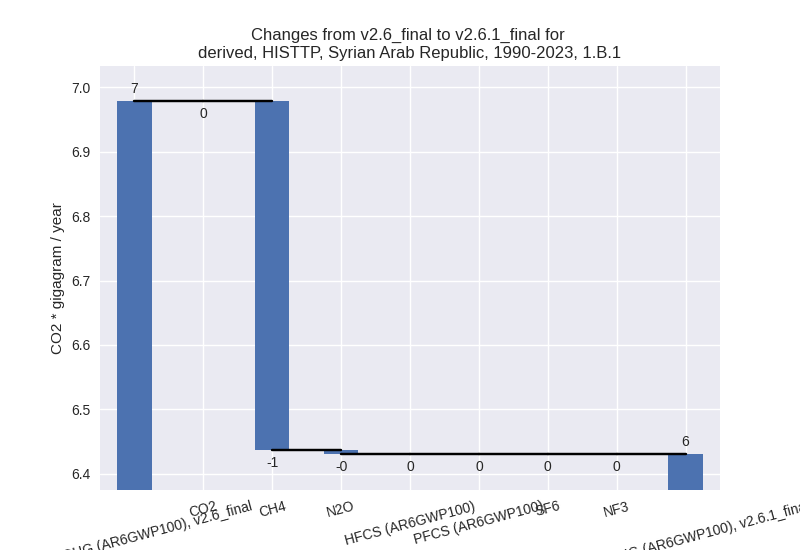
There is no subsector information available in PRIMAP-hist. - 1.B.2: Total sectoral emissions in 2022 are 3453.84
Gg CO2 / year which is 10.4% of category 1 emissions. 2023 Emissions
have changed by -21.1% (-923.28 Gg
CO2 / year). 1990-2023 Emissions have changed by -3.4% (-472.27 Gg CO2 / year). For 2023
the changes per gas
are:
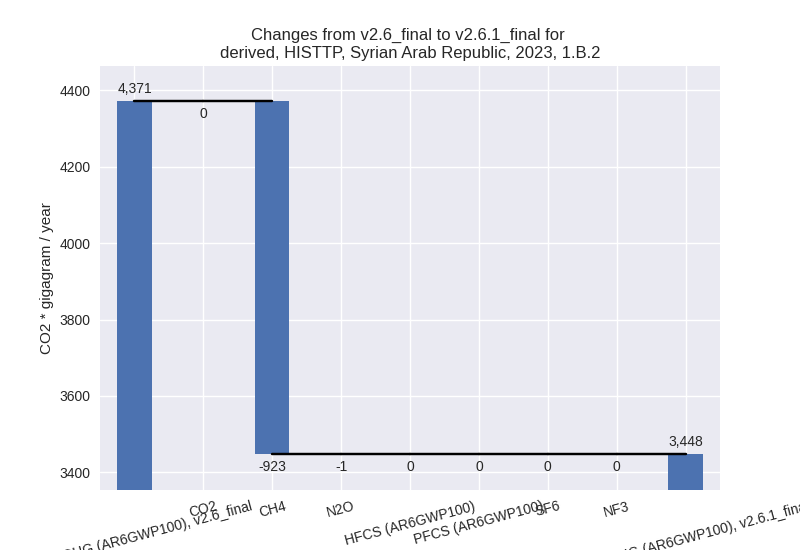
For 1990-2023 the changes per gas are: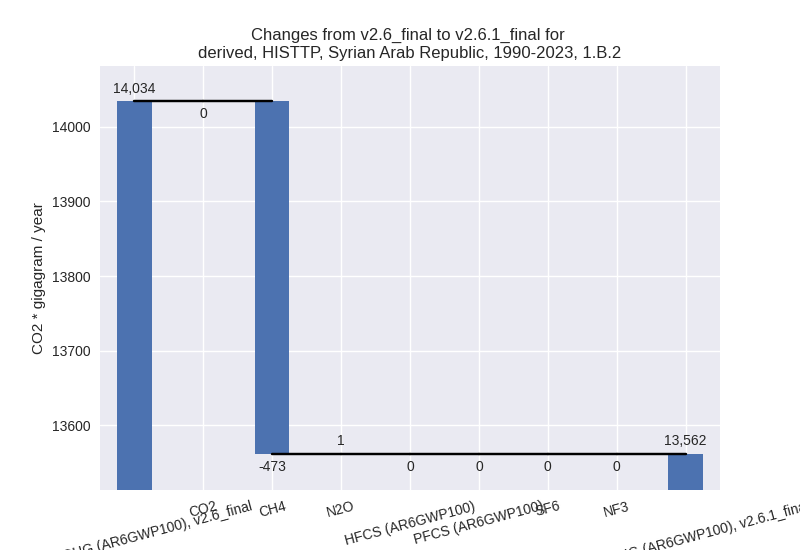
There is no subsector information available in PRIMAP-hist.
- 2: Total sectoral emissions in 2022 are 7945.63 Gg
CO2 / year which is 16.3% of M.0.EL emissions. 2023 Emissions have
changed by 3.9% (313.04 Gg CO2 /
year). 1990-2023 Emissions have changed by 6.0% (278.27 Gg CO2 / year). For 2023 the
changes per gas
are:
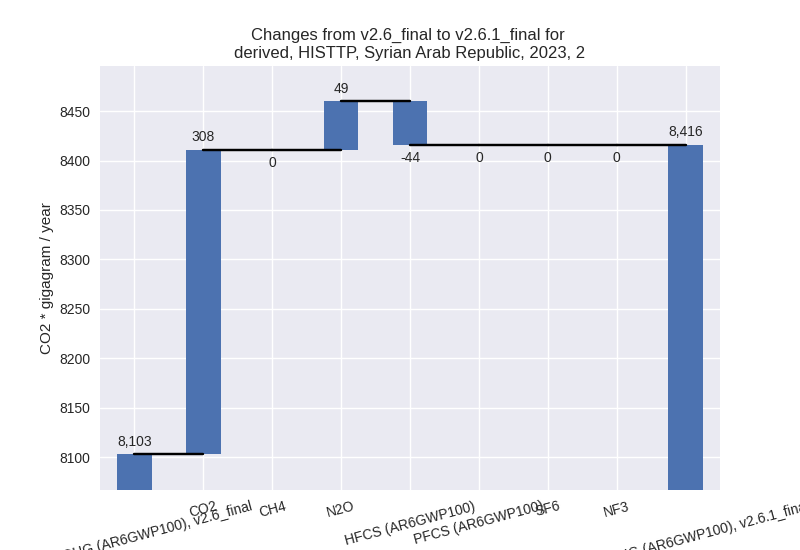
For 1990-2023 the changes per gas are: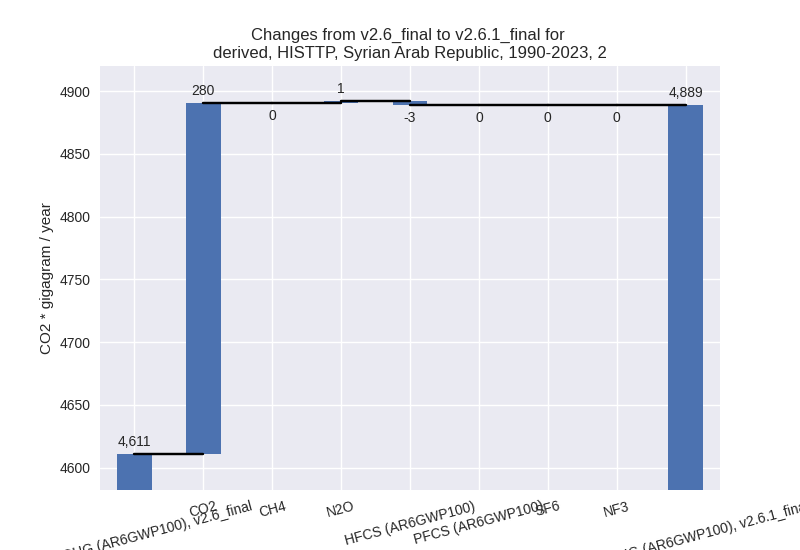
- M.AG: Total sectoral emissions in 2022 are 6388.74 Gg CO2 / year which is 13.1% of M.0.EL emissions. 2023 Emissions have changed by 1.9% (125.27 Gg CO2 / year). 1990-2023 Emissions have changed by 0.1% (9.30 Gg CO2 / year).
- 4: Total sectoral emissions in 2022 are 1225.88 Gg
CO2 / year which is 2.5% of M.0.EL emissions. 2023 Emissions have
changed by -59.1% (-1789.45 Gg CO2 /
year). 1990-2023 Emissions have changed by -36.3% (-1786.65 Gg CO2 / year). For 2023
the changes per gas
are:
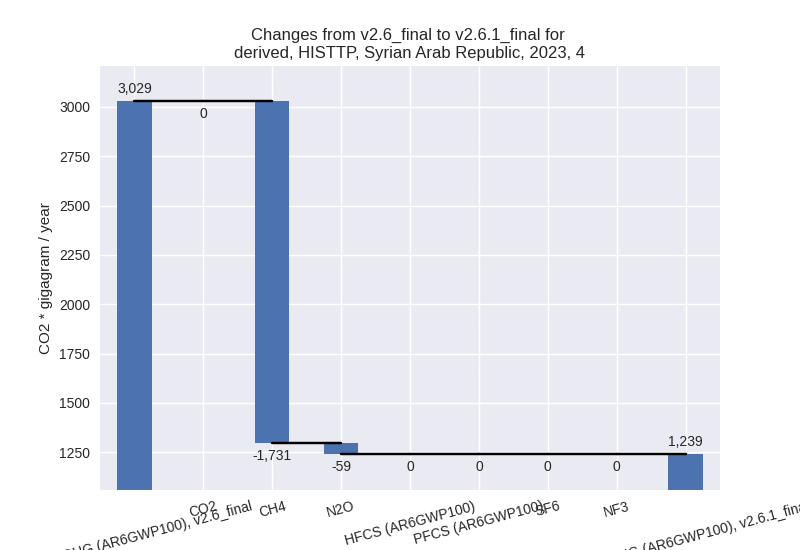
For 1990-2023 the changes per gas are: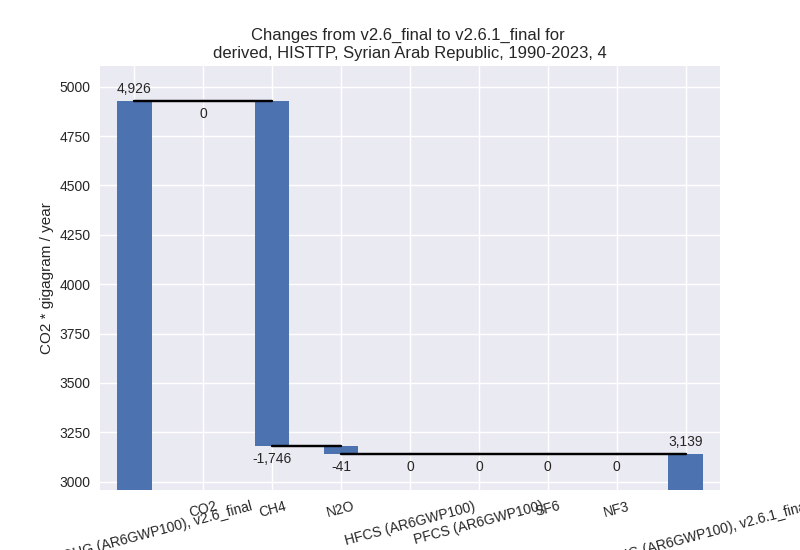
- 5: Total sectoral emissions in 2022 are 91.30 Gg
CO2 / year which is 0.2% of M.0.EL emissions. 2023 Emissions have
changed by -15.2% (-16.68 Gg CO2 /
year). 1990-2023 Emissions have changed by -8.2% (-15.26 Gg CO2 / year). For 2023 the
changes per gas
are:
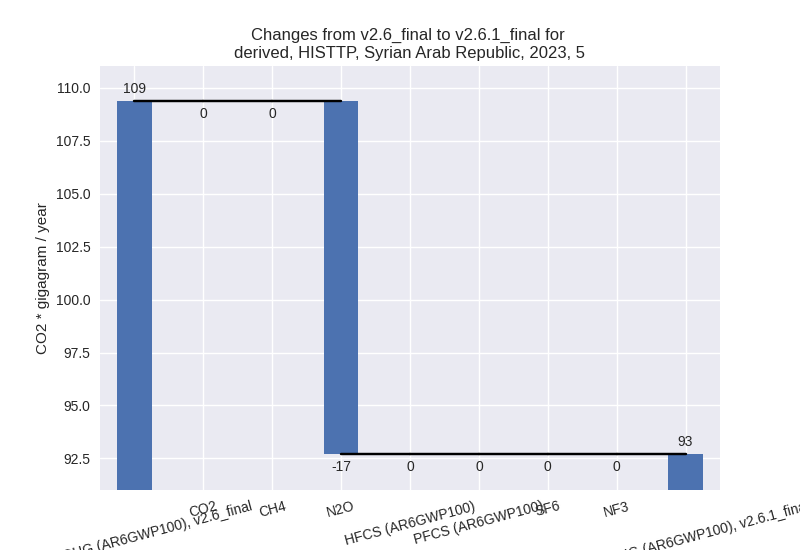
For 1990-2023 the changes per gas are: